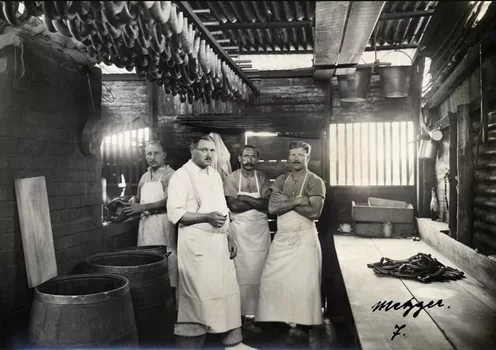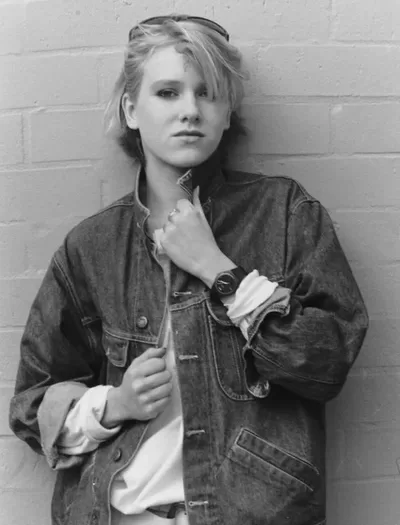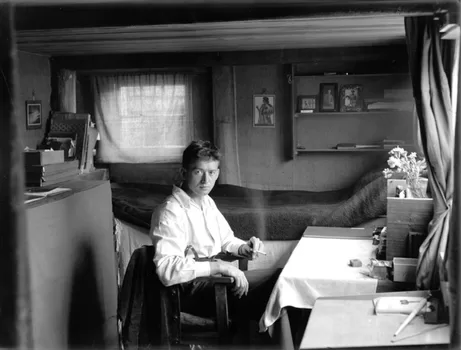
In the annals of history, amidst the tumult of World War I, one man’s journey through the lens would not only document the human spirit but also unveil the resilience and creativity born within the confines of internment.
This is the remarkable story of photographer Paul Dubotzki and his captivating journey through three of Australia’s WWI internment camps, Torrens Island, Holsworthy and Trial Bay.
Before the war’s outbreak, Dubotzki had embarked on an expedition to South-East Asia, honing his craft and capturing the essence of distant lands through his lens.
Upon his return, he settled in Adelaide, establishing a thriving photographic studio. Little did he know that the winds of war would soon sweep him into a narrative that would define his legacy.
During World War I, approximately 7000 individuals labeled as ‘enemy aliens’ found themselves confined within the bounds of internment camps scattered across New South Wales. In 1915, Dubotzki, along with 400 other young men, found himself labeled as an ‘enemy alien’ and interned on Torrens Island.
Despite the confines of internment, Dubotzki’s passion for photography persisted. With remarkable ingenuity, he secured a darkroom on the island, ferrying chemicals from Adelaide to continue his craft. Armed not just with his camera, but with a keen eye for the untold stories lingering within the barbed wires and guarded perimeters, Dubotzki began documenting life behind barbed wire.
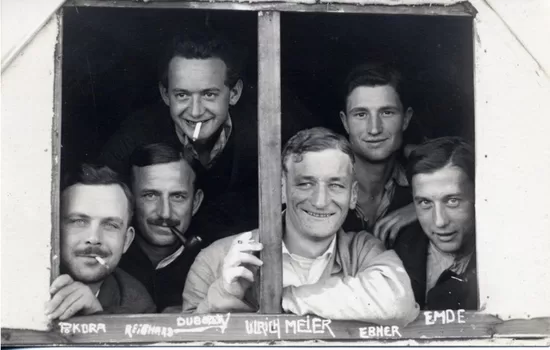

Capturing Captivity
Dubotzki’s lens became a window to the world within the internment camps. He captured portraits and postcards of camp life, selling them to fellow prisoners and even guards. Through his entrepreneurial spirit, Dubotzki ensured the distribution and survival of his images, providing a glimpse into the resilience and camaraderie that flourished amidst adversity.
In the midst of internment, the prisoners found solace in creativity. They published three issues of their own hand-drawn newspaper, Der Kamerad, combating boredom with stories and drawings that ranged from whimsical announcements of flying schools to offers to build ships and submarines.
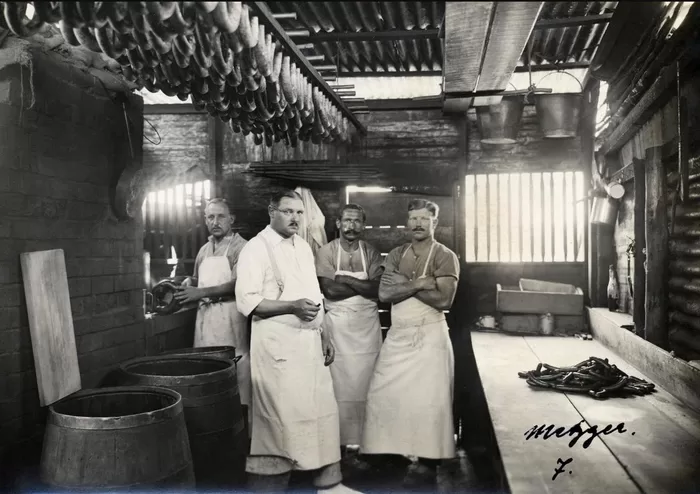

Dubotzki’s entrepreneurial flair extended beyond photography. With a touch of irony, he advertised his photographic business on Torrens Island, christening his address as ‘Hauptstrasse’ (Main Street).
The prisoners formed an athletic club, a choir, and several bands, showcasing their indomitable spirit and determination to thrive amidst confinement.
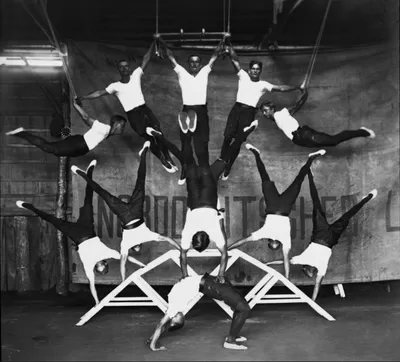

Dubotzki’s photographs, discovered in their entirety in 2007 in the quaint German town of Dorfen, unveil a world unseen by many. They peel back the layers of confinement to reveal a vibrant tapestry woven by the internees themselves.
Within the confines of these camps, a microcosm of society flourished. Austrians, Germans, and individuals captured by the Allies in Asia forged bonds of solidarity, transforming their internment into a canvas for ingenuity and resilience.
Dubotzki’s lens captures the astonishing ingenuity and industry of those within the camps. Cafes buzzed with activity, clubs formed to foster a sense of community, and newspapers documented the daily lives and aspirations of the internees.
But it didn’t stop there. In the face of adversity, they built businesses, theaters echoed with laughter, tennis courts saw fierce competition, and kitchen gardens bloomed with life. From boat-building to regattas, beach activities to athletic demonstrations, every corner of the internment camps bore the mark of human determination and creativity.
Torrens Island Concentration Camp
Initially, life within the camp was a relaxed atmosphere, with discipline being relatively lenient. In honor of the Kaiser’s birthday, the prisoners orchestrated lively parades and dances, some even donning attire reminiscent of courtly ladies. With the help of a skilled internee tailor, dresses were fashioned, while hats were ingeniously crafted from wire and paper. The festivities on Torrens Island in January 1915, captured by Paul Dubotzki, featured courtly figures and a whimsical court jester, adding a touch of regal splendor to the celebration.
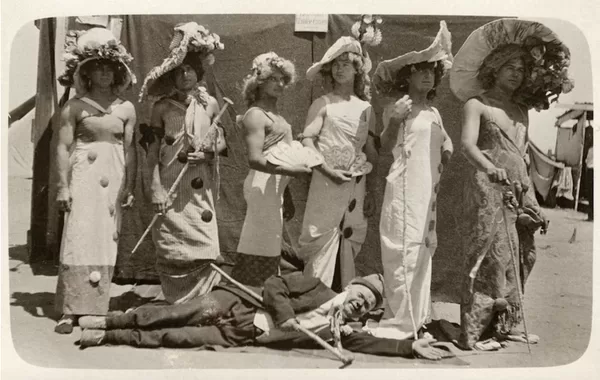

However, the dynamic shifted dramatically when Captain George Edward Hawkes assumed command in early 1915, and introduced a strict disciplinary approach. On the back of a group photo showing Captain Hawkes, Dubotzki wrote: ‘In the middle of the image is the bastard of a commandant who at the most minor offence had us Germans lashed with his whip on our naked flesh or worked over with the bayonet.’
Another Dubotzki photo shows ‘the sheep pen’ or ‘the Hotel de Ville’. Dubotzki’s caption reads, ‘Thirty days of rainy weather these Germans had to spend in this cage with just one warm feed.’
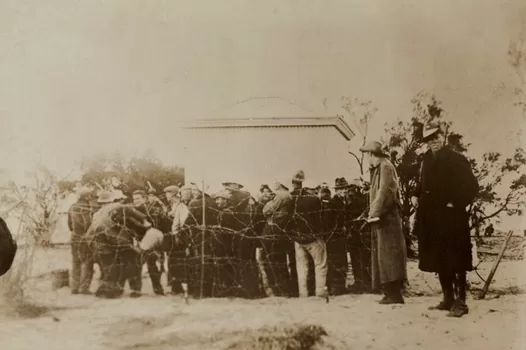

On the night of June 19, 1915, prisoners Johann Gerdes and Wilhelm Holman executed a daring escape from Torrens Island by sneaking through drains and crossing the Port River in a boat. However, their freedom was short-lived as they were soon recaptured and returned to the island.
Upon their return, they faced brutal punishment at the hands of their captors. Under the orders of Hawkes, the men were handcuffed to a tree and subjected to severe flogging with a cat of nine tails, resulting in their hospitalization. Photographer Paul Dubotzki managed to capture evidence of their injuries, which he clandestinely printed and smuggled off the island in a boot sent to the mainland for repair, leading to an inquiry and the dismissal of Hawkes.
Following this incident, the Torrens Island Concentration Camp was shut down, and the prisoners were transferred to Holsworthy Camp and Trial Bay Gaol in New South Wales, where they remained for the duration of the war.
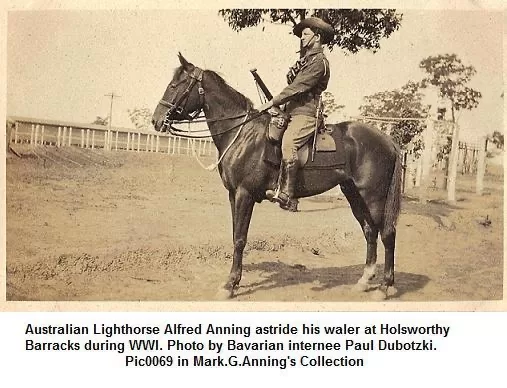

Holsworthy Internment Camp
As the war drew to a close, the prisoners were transferred to Holsworthy camp and Trial Bay Gaol in New South Wales.
Holsworthy Internment Camp, nestled near Liverpool on the outskirts of Sydney, stood as the largest camp for prisoners of war in Australia during the tumultuous era of World War I.
Amidst varying estimates, it housed between 4,000 to 7,000 internees, forming a diverse mosaic of individuals swept into the folds of internment without trial.
The occupants hailed from the far reaches of the Austro-Hungarian empire, encompassing Germans, Slavic men predominantly from Dalmatia, along with Czechoslovakians and Hungarians. Among them were also the staff of German companies residing in Australia, crews of ships ensnared in Australian ports, as well as naturalized and native-born Australians of German descent.
Despite their varied origins, they shared a common fate—internment without due process. Within the confines of Holsworthy, these individuals forged bonds of solidarity, their stories echoing the complexities of war and the human spirit’s resilience amidst adversity.
Trial Bay Internment Camp
Trial Bay Gaol stands proudly on the rugged headland of Laggers Point, nestled within the picturesque landscape of Arakoon on the southern fringes of Trial Bay. Its imposing presence graces the vicinity near the quaint towns of Arakoon and South West Rocks in New South Wales.
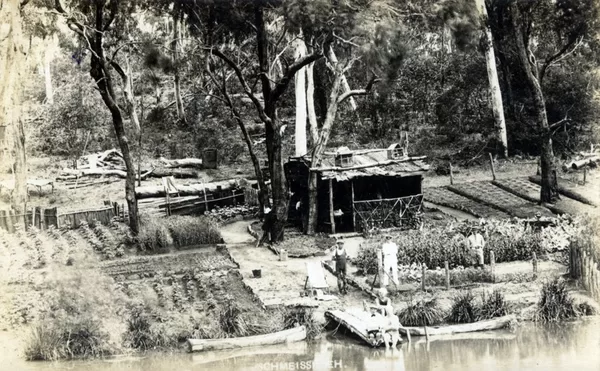

Construction of Trial Bay internment camp began in 1877, but financial setbacks delayed its completion. By 1882, only one cell block, providing accommodation for 64 out of the intended 128 prisoners, was finished. Despite ongoing construction, the facility remained incomplete when World War I erupted in 1914. During the war, Trial Bay gaol was repurposed to house German internees.
Similar internment camps for Germans existed in NSW and the ACT, including Berrima on the South Coast, Bourke in the western part of the state, Molonglo in the ACT, and the significant camp at Holsworthy in south-west Sydney. Trial Bay camp, however, primarily interned Germans of social standing, including prominent businessmen and professionals. German naval officers and elite residents of neighboring British Commonwealth countries in the Pacific and South East Asia were also confined within its walls.
Despite the confines of the gaol and the imposition of daily rules, internees enjoyed relatively lenient conditions. Within the boundaries of the gaol during daylight hours and under the watchful eye of guards stationed in the four watchtowers, they had a degree of freedom of movement.
In 1919, as the curtains of internment lifted, Dubotzki and his fellow internees were deported back to Germany, some torn from the families they had forged in Australia.
For Dubotzki, the return to Germany marked a new chapter. Re-establishing his photographic business in Dorfen, he lived a long and productive life, leaving behind a legacy immortalized through his lens. In 1962, Paul Dubotzki passed away, but his photographs endure as a testament to the resilience of the human spirit amidst the shadows of internment.
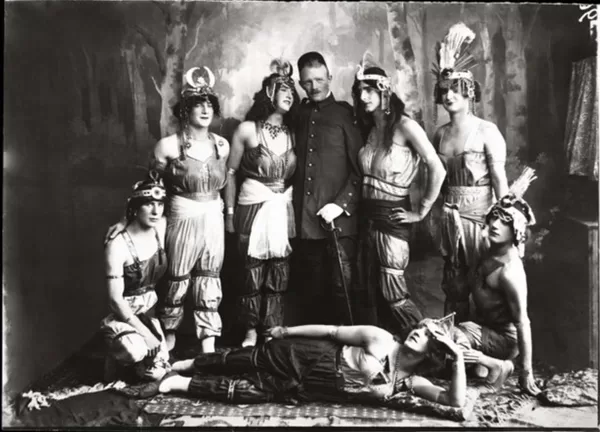

Who is Paul Dubotzki?
Dubotzki’s lineage traced back to a family rooted in the railways, with his father, Paul Dubotzki, serving as a senior railway master, and his mother, Auguste, providing the nurturing foundation for their son’s future endeavors. Following his formal education, Dubotzki embarked on a journey into the world of photography, refining his craft in locales like Lenggries and Baden-Baden.
In the early 1910s, Dubotzki’s adventurous spirit led him to join an expedition bound for the distant lands of China and Sumatra. However, the outbreak of World War I in East Asia, likely in German New Guinea, caught him by surprise. Seeking refuge, he found himself on the shores of Adelaide, Australia, only to be interned as an enemy alien in 1915.
Dubotzki’s internment spanned across various camps, including Torrens Island, Holsworthy, and Trial Bay Gaol. Despite the confines of captivity, his passion for photography persisted, with his lens capturing the nuances of life within the barbed wire.
For his family in Dorfen, the truth of Dubotzki’s fate remained shrouded in uncertainty for a prolonged period, as they grappled with his mysterious disappearance.
Upon his return to Dorfen in 1919, Dubotzki embarked on a new chapter, establishing a camera shop and embracing matrimonial bliss with Maria März. The avenue of birch trees, a symbol of joy planted by his parents, heralded his homecoming.
Their union bore witness to the arrival of three children, with Dubotzki’s daughters following in his footsteps, mastering the art of photography. Tragically, their son met his fate as a soldier during World War II, casting a somber shadow over the family’s legacy.
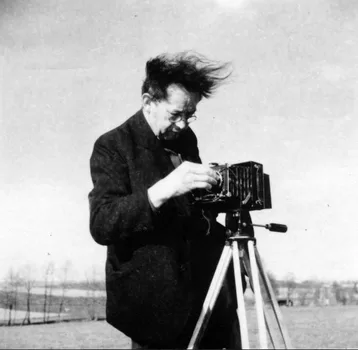

In the years that followed, Dubotzki’s creative endeavors expanded beyond photography, encompassing painting, acting, and directing within the realm of amateur theaters. His final resting place in Dorfen’s municipal cemetery marked the culmination of a life journeyed across continents, capturing moments and memories through the lens of his camera.
Dubotzki’s legacy
In the tumultuous era of World War I, amidst the chaos and strife, a young Bavarian photographer found himself swept into a narrative that would etch his name into history. Paul Dubotzki’s lens didn’t just capture images; it encapsulated an extraordinary tale of resilience, creativity, and human spirit amidst the confines of internment.
Through Dubotzki’s photographs, we are invited into a world where resilience transcended confinement, where the human spirit soared above the constraints of barbed wire. His images stand as a testament to the indomitable nature of the human spirit, reminding us that even in the darkest of times, creativity, community, and hope can flourish.
Related stories
Stanley Kubrick career as a still photographer
Andre Kertesz, a pioneer of street & fine art photography
Sebastião Salgado lens on Humanity’s Struggle and Resilience
Brecht’s Man Equals Man by Theatre of the Deaf
Heinrich Hoffman photographs Adolf Hitler public speaking
Dorothea Lange’s Pioneering Approach to Portraiture
State Library of New South Wales 20th Century photography
The first photograph taken in Australia was by Captain Lucas
Australia’s first professional photographer George B Goodman
The oldest surviving Daguerreotype in Australia, 1845

